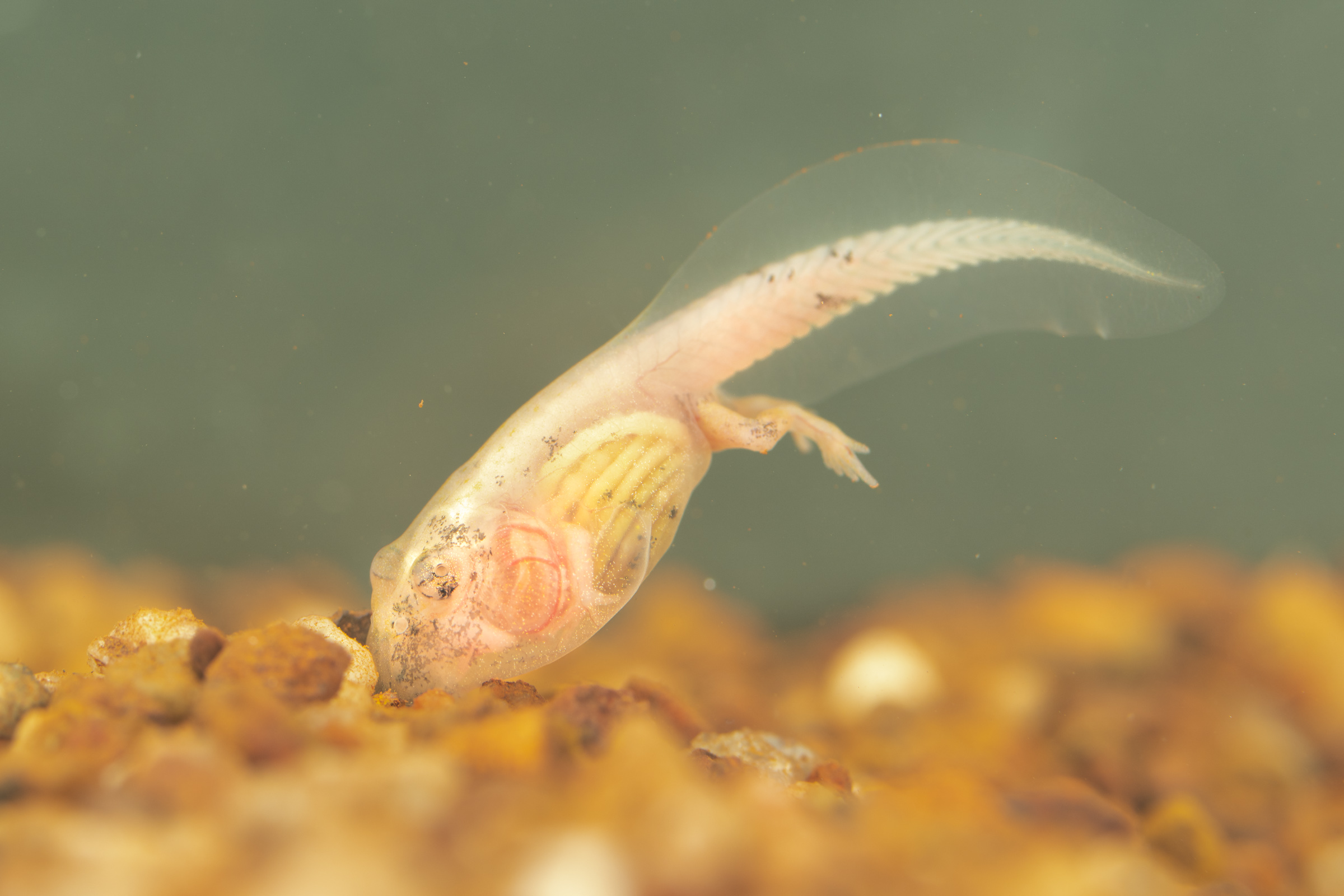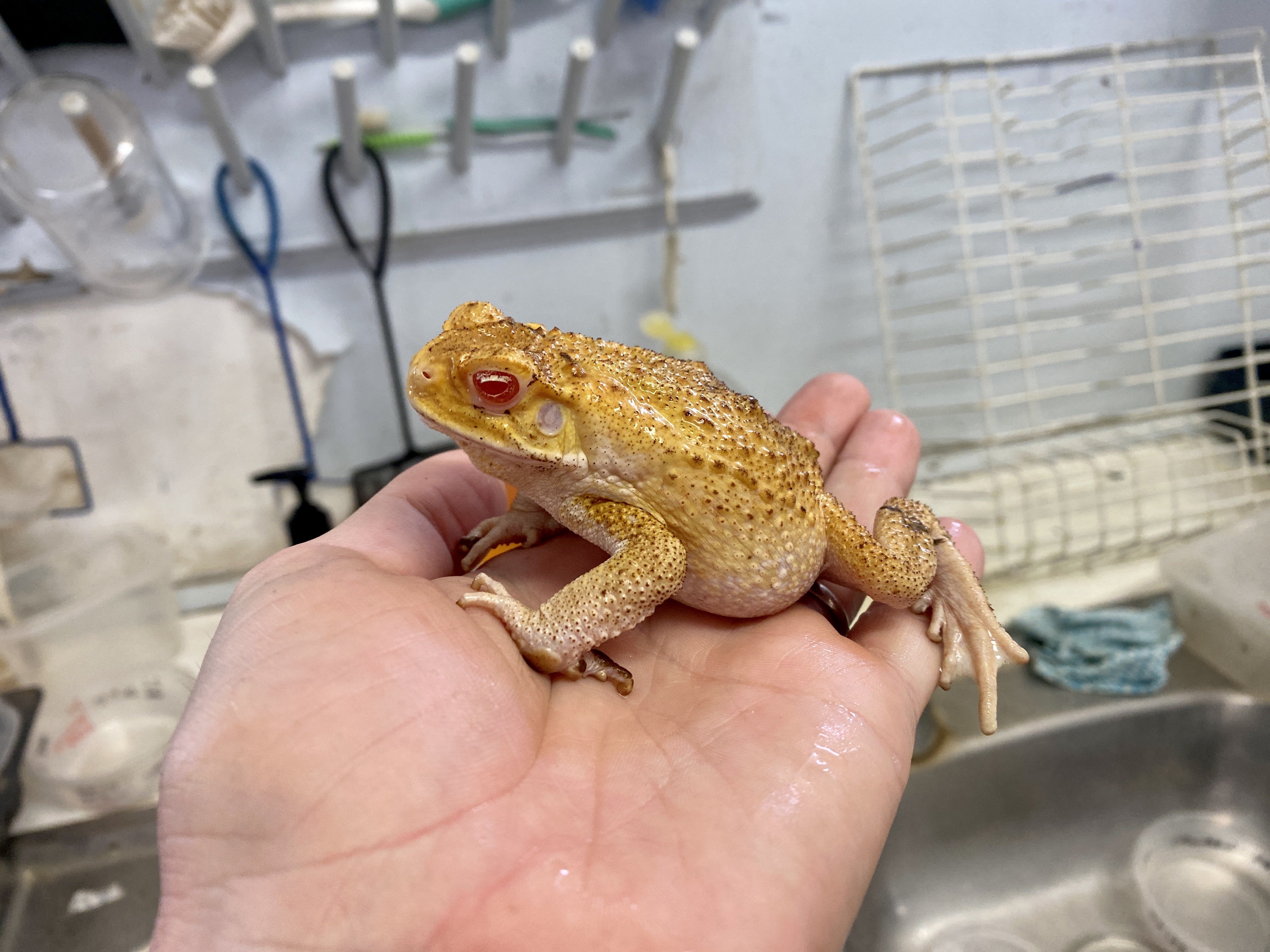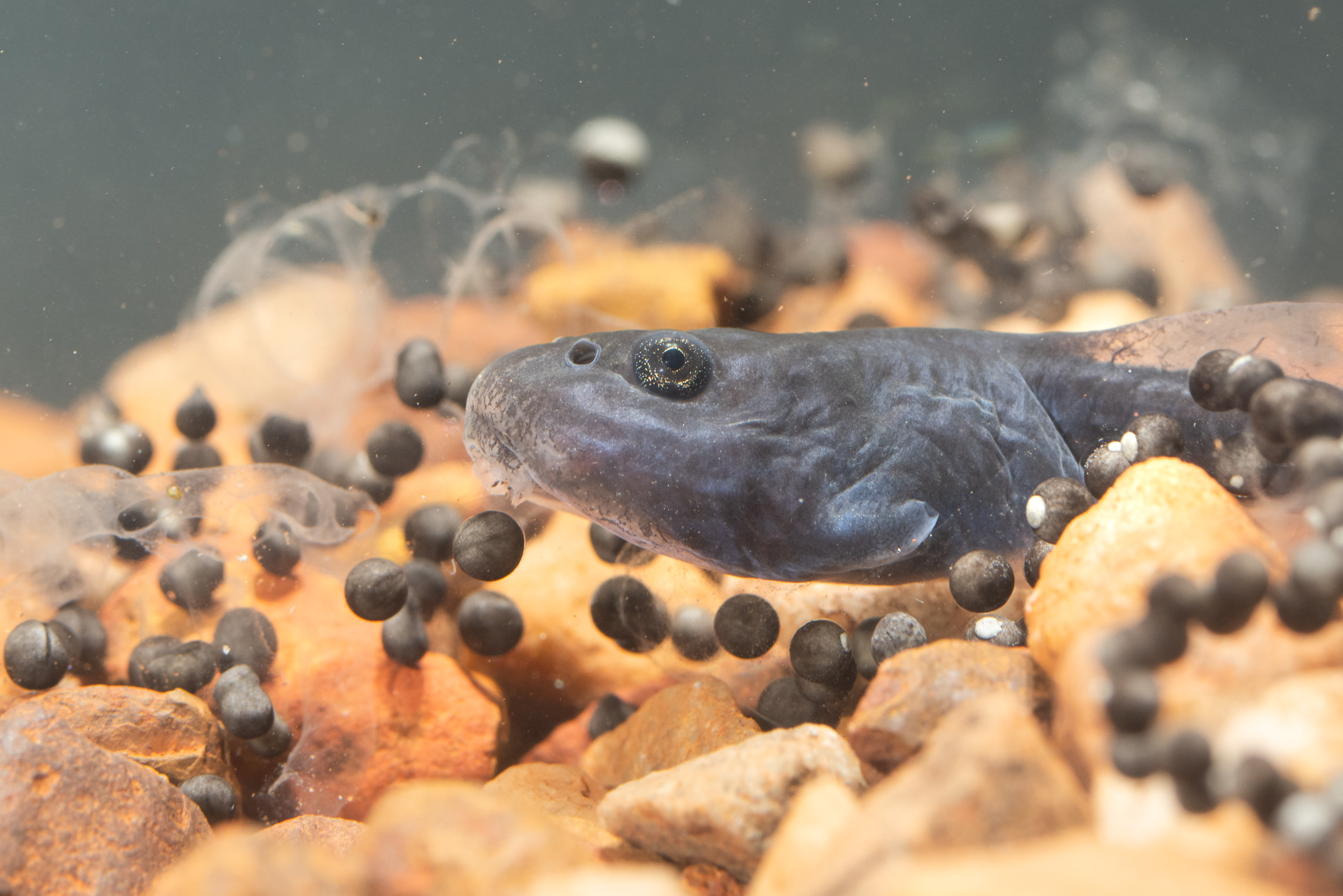Peter Pans
We have made rapid progress in using CRISPR-Cas9 to produce tadpoles that cannot transform into toads. Michael Clark first injected toad eggs to knock out a gene that is needed to create normal colours in the toad’s skin. And it worked. The resulting tadpoles were albino – pure white. And when they transformed into toads, we had pure white toads as well. The experiment was a terrific success.

An albino cane toad tadpole produced by knocking out a gene for pigment formation. Photograph by Etienne Littlefair.

An adult albino cane toad, producing by gene knockout. Photograph by Chris Jolly
When we knew that the method worked, we next tried to produce toads that are unable to metamorphose, and so spend their entire lives as tadpoles. We call these "Peter Pan" tadpoles, after the storybook character who never grew up. We injected eggs with the right chemicals and watched anxiously as the tadpoles grew. The “normal” tadpoles – the ones we hadn’t injected – turned into baby toads. But the tadpoles from injected eggs stayed as tadpoles. They grew larger, and developed tiny back legs – but that was all. Months later, they were still tadpoles. They grow bigger than normal toad tadpoles, but are still a lot smaller than the tadpoles of many native frogs.
The next step was to check that Peter Pans are cannibals, just like normal toad tadpoles. To our delight they are super-cannibals – they eat about four times as many eggs as a normal tadpole. And even better, they are very picky eaters (like normal toad tadpoles are). Our Peter Pans are much more interested in eating the eggs of their own species than in eating the eggs of native frogs.

A Peter Pan toad tadpole eating newly-laid toad eggs. Photograph by Etienne Littlefair.
That intense cannibalism also makes it easy for us to trap the Peter Pans if we want to remove them from a waterbody after our experiments have finished. The Peter Pans will enthusiastically rush into our baited traps. So if for any reason we decide to take Peter Pans back out of a natural pond, we can do so rapidly.
Before we release Peter Pans in the wild, we will check their effectiveness at toad control, and look for any collateral impact on native wildlife. Decades of research have shown that normal toad tadpoles don’t have any such effects, but we are checking that for Peter Pans as well. For example, we will measure their poison content, and will run trials in large outdoor enclosures that contain native fish, turtles and insects as well as Peter Pans.
Our results so far are encouraging. Native frogs and fishes rarely try to eat Peter Pans; and don’t get sick if they do eat a few. When we put trays of shallow water out containing Peter Pans, birds usually don’t eat them – but again, don’t get sick if they do. So Peter Pans are not anywhere near as toxic as toad eggs or adult toads.
Why be so careful? Because the example of cane toads being brought to Australia to control insect pests is a constant reminder of potential catastrophe. Things can go wrong if you don’t carefully examine the likely consequences of your actions. To avoid the mistake made by sugar-cane scientists in the 1930s, we are moving slowly and cautiously to develop a low-risk, effective new approach to cane toad control. Once we have that information, we will approach all the stakeholders (including indigenous communities) to explain our plans and discuss how to proceed.
Georgia, Alex and Chris radio-tracking adult cane toads around a turkey-nest dam. Photograph by Rick Shine.
There’s still a long way to go before we can mass-produce Peter Pans, but we are well-advanced in planning that deployment. The best place to test the method may be isolated artificial ponds in arid habitats, and ponds on small islands. Many islands are important for native biodiversity, and have very few breeding sites for toads.
Lastly, we’d like to thank the Minderoo Foundation, the Australian Research Council and the Western Australian Department of Conservation, Biodiversity and Attractions for funding our work on Peter Pans. When Rick first thought of the idea it seemed like a “moonshot” that would probably be impossible, but could be incredibly exciting if it worked. That dream is now close to reality. We can use cane toads to control themselves.
